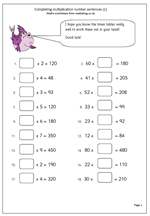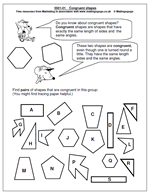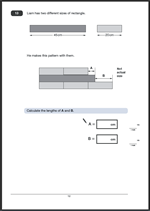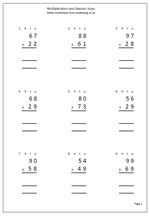 This maths worksheet is suitable for Year 5 children who have a good knowledge of the times tables and can manipulate numbers ‘in their heads’.
This maths worksheet is suitable for Year 5 children who have a good knowledge of the times tables and can manipulate numbers ‘in their heads’.
It is surprising the number of different strategies we use to calculate mentally. The same type of question can be processed several different ways, often depending on the numbers being use. If we look at some of the questions on this worksheet it will become clearer as to what I mean, as I try to explain how I go about answering them, although you may well have different (and better) alternatives.
Question 1: ? x 2 = 120
Looking at the question I immediately think that I have to halve 120 to get the answer. I do this by halving 12, which is 6 and multiplying by 10, making 60. This is all done in a split second, and I might be tempted to think I did it in one, but it is important to stop and think of the steps that you go through.
Question 3: ? x 4 = 48
I could have halved and halved, or divided by 4, but, in fact, I learned my 12 times table many years ago and I know, instantly, that 12 x 4 = 48 so the answer of 12 came immediately.
Question 4: 41 x ? = 205
The answer was not immediately obvious. I looked at the unit (1) and the unit in the answer (5) and it struck me that I need to multiply by 5. A quick check that4 x 5 will give me 20 confirmed this.
These are just a few of the ways of working out the answers and it is well worth asking children how they go about finding the answers.
Complete multiplication number sentences (1)

 On this worksheet the aim is to find pairs of shapes which are congruent, and as always, the answers are provided! I do recommend the tracing option!
On this worksheet the aim is to find pairs of shapes which are congruent, and as always, the answers are provided! I do recommend the tracing option!

